The style of quilled designs has changed significantly in the past decade and these developments are tremendously exciting. Thankfully, art isn’t static—how dull that would be! I often see images on Instagram that barely resemble classic quilling that was popular at the end of the last century.

Marriage Certificate by Ann Martin / Calligraphy by Living Letters Studio
It was a defining moment in which I decided to learn everything I could about paper quilling by joining online groups and borrowing library books. This led to the discovery that I was more creative than I ever imagined. Now I do commissioned pieces and enjoy teaching others to quill via projects in books and magazines and tutorials on my blog.
Also known as paper filigree, quilling has a long history that dates back at least several hundred years.
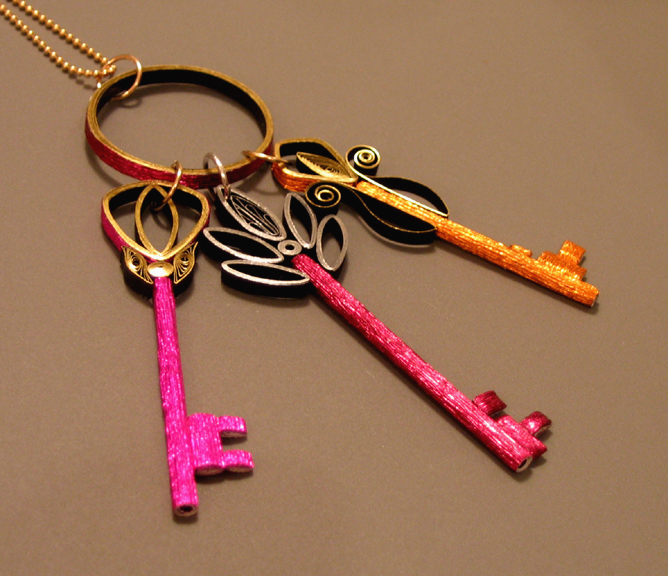
Ring of Keys by Ann Martin
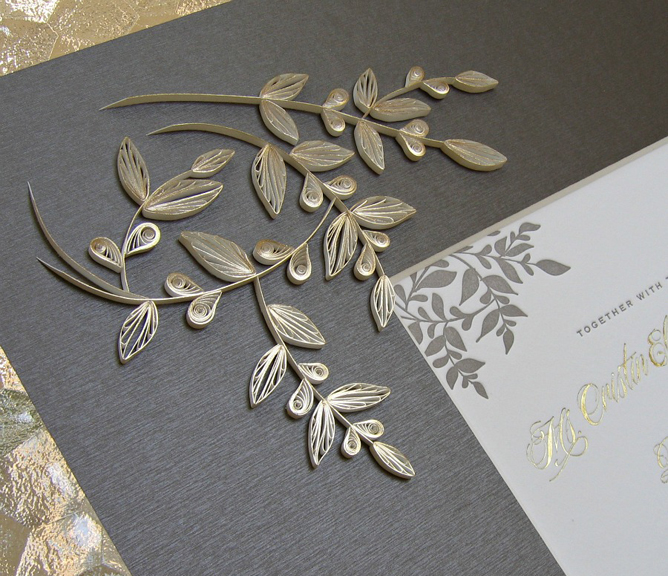
Wedding Invitation Mat by Ann Martin
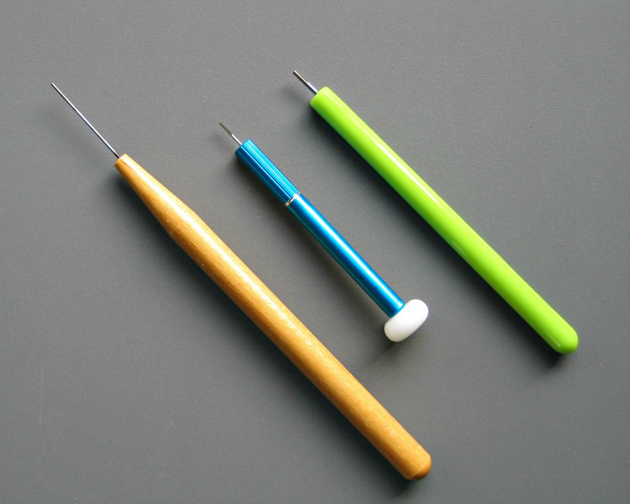
Quilling tools
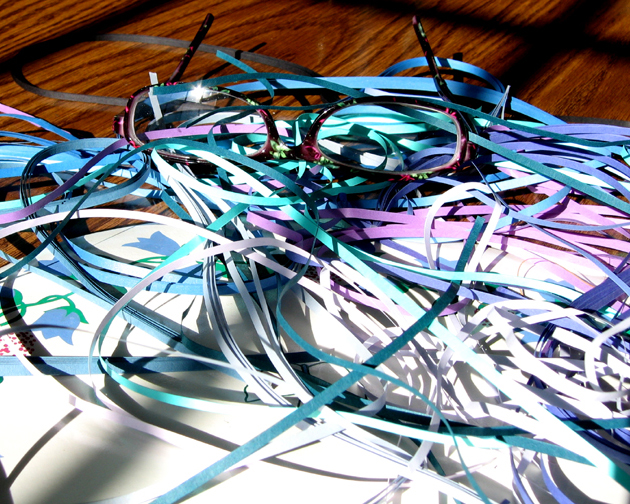
Quilling strips

Silver Orb Pendant by Ann Martin
Inexpensive strips in several widths are readily available from online suppliers. Specialty choices include graduated shades, two-tone and two-sided colors, pearlized, vellum, corrugated, and even mirror foil. The type I most enjoy using has a fine metallic gold, silver, or copper edge. The elegant shine has definite wow-power, making it ideal for quilled jewelry.
Traditional, intricate quilling is still being done, and often beautifully so, but a healthy percentage of new adopters, most of whom are young women in their 20s and 30s, practice a form of contemporary line art composed of gently curved strips that are wider than the standard 1/8″ (3mm) width. Time-honored shapes— teardrops, marquises and crescents, for example—play only a very small role in the designs, if they are present at all.
Perhaps the 2016 USPS Love Stamp caught your eye when it was released in January. It features an enchanting paper heart composed of gracefully shaped elements created by UK paper artist, illustrator, and quilling trendsetter Yulia Brodskaya.

Love Stamp by Yulia Brodskaya

Paper Typography by Yulia Brodskaya
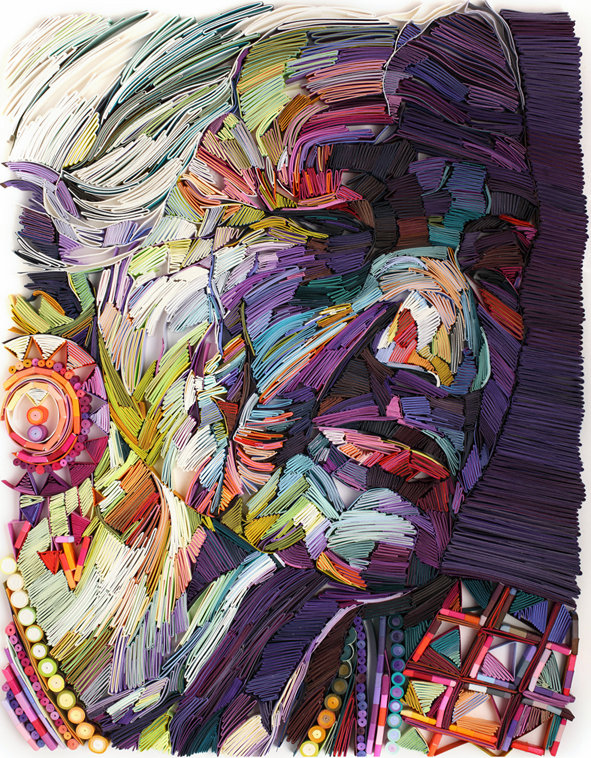
Amethyst by Yulia Brodskaya

Textile Market by Yulia Brodskaya
Textile Market, a vivid symphony of colors and patterns along with facial character lines that she creates so skillfully, was inspired by her photographic collection of market stalls.
Currently, Yulia is exploring a new avenue that she calls painting with paper and describes as the combining of folded strips, the way one would mix paints on a palette.
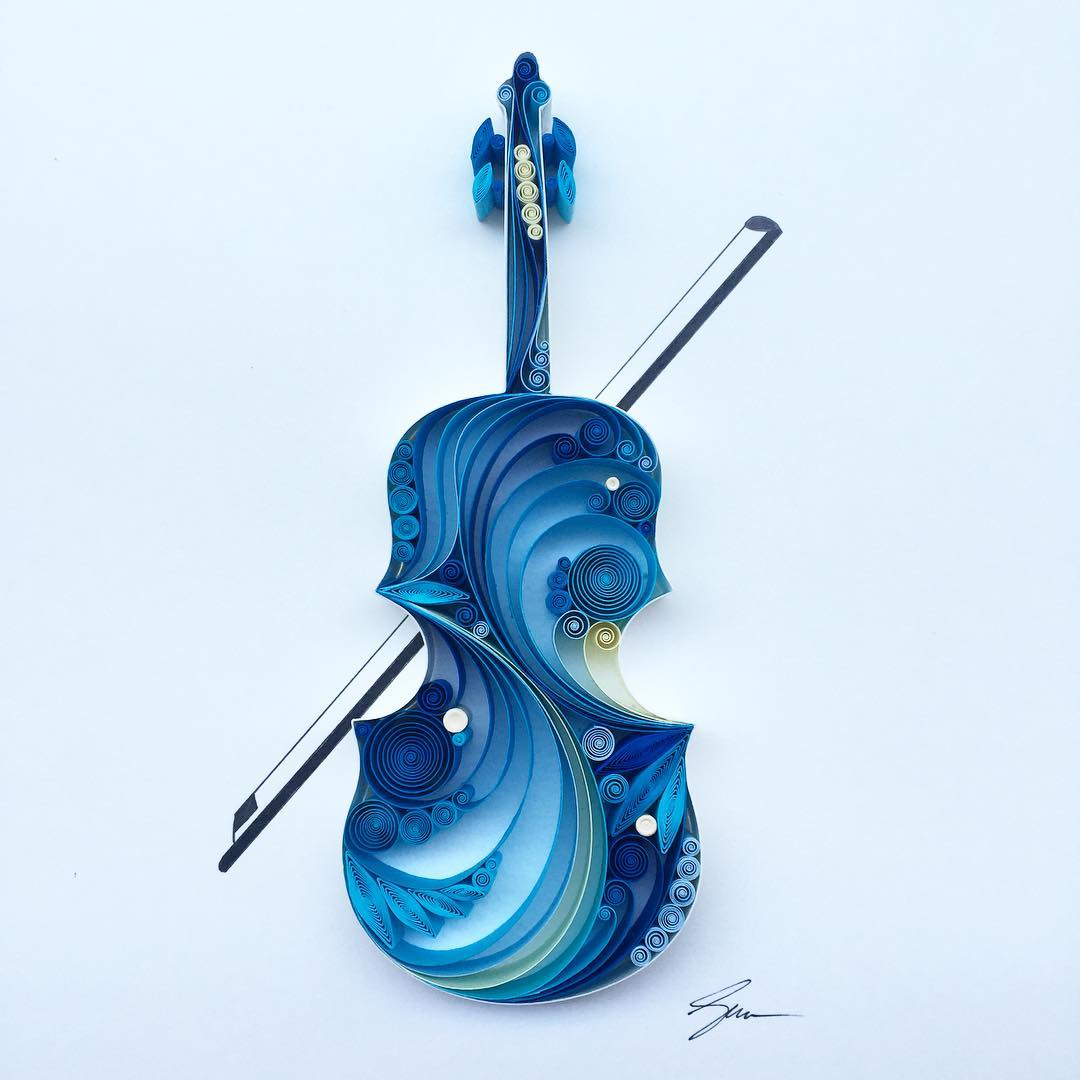
Violin by Sena Runa
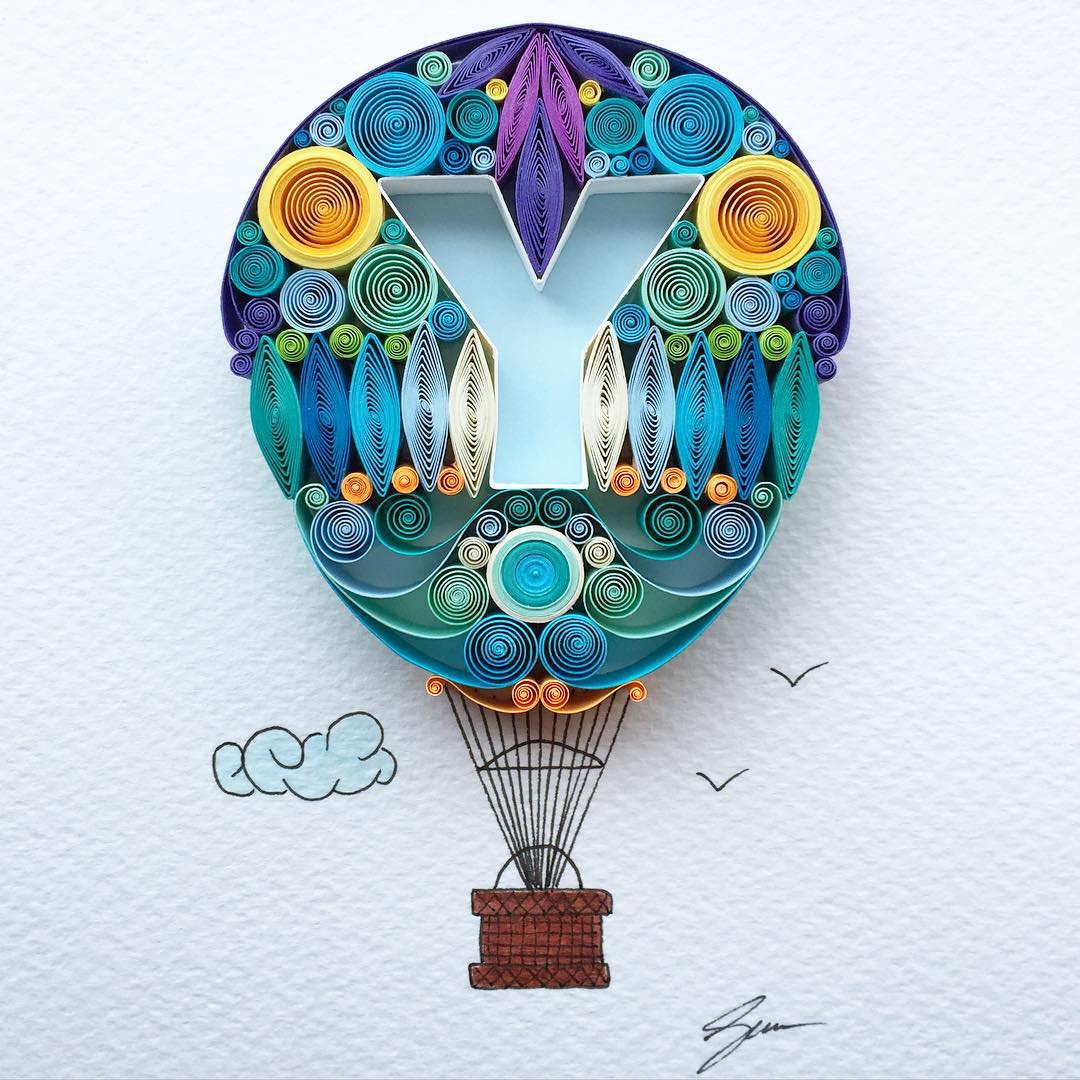
Hot Air Balloon by Sena Runa
Sena has an enormous following on Instagram with more than 100,000 followers as a result of online features.
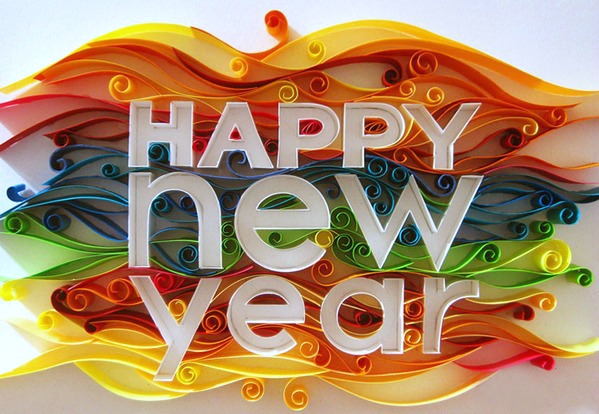
Papergraphy by Sabeena Karnik

Tropical ‘O’asis by Sabeena Karnik
Sabeena frequently designs dimensional lettering projects that she calls papergraphy, as well as illustrative quillwork.
The piece at right is one of three commissioned pieces Sabeena created for the sponsors of the 2016 USA Olympic swimming trials. The jubilant images were used on promotional banners, posters, and calendars.

USA Olympic Swimming Trials 2016 by Sabeena Karnik

Paper Mosaic by Erin Curet
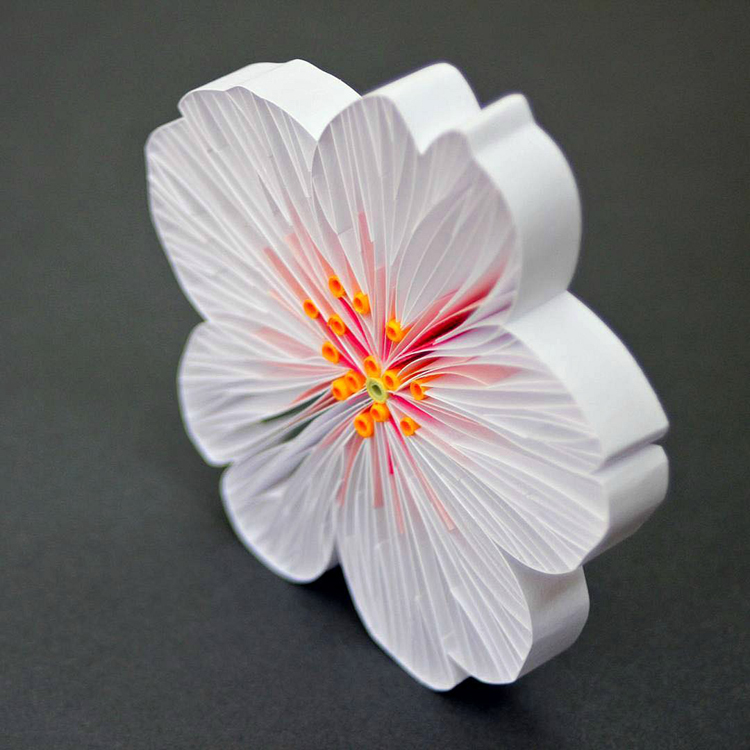
Cherry Blossom by JUDiTH+ROLFE
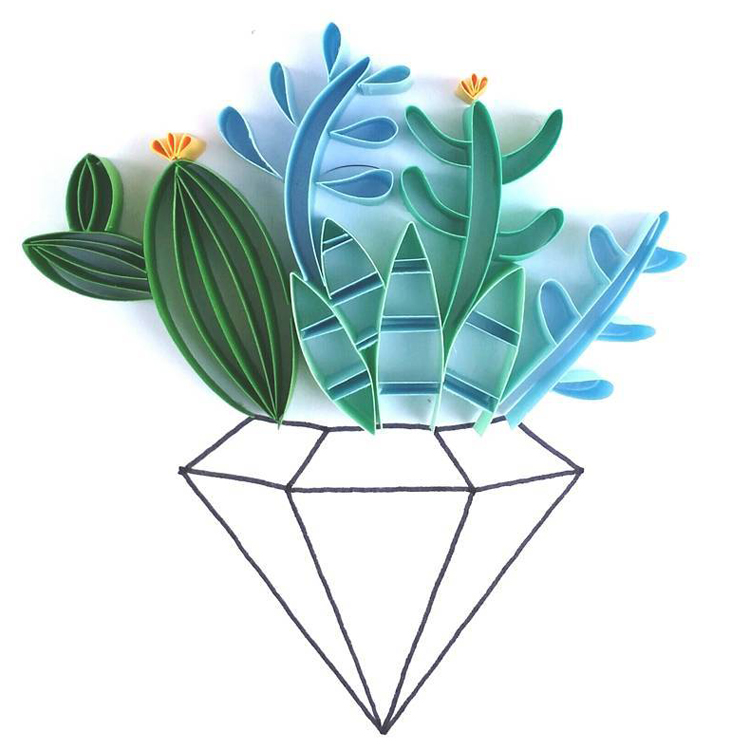
Succulents by Meloney Celliers
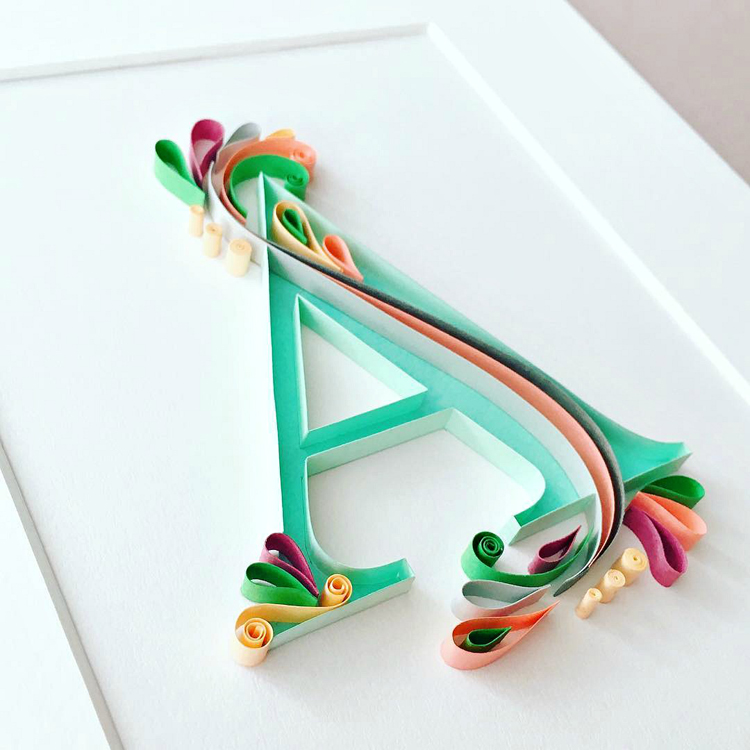
Letter A – Iwona Wright (moon_bloom_)
A vast number of quillers in all corners of the world have been working with paper only a handful of years, yet they are bringing new advances to the art. Designers may combine quilling with a tablet-drawn image or place it atop color-shaded backgrounds. Some lean toward forming highly detailed standalone figures.
I hesitate to name even this short list as there are many others who also do exceptional work, but to see additional contemporary designs, Google Cecelia Louie, Natasha Molotkova, Licia Politis and Katherine Usowa. On Instagram, search out judithandrolfe, mainelyquilling, melly_the_elephant, moon_bloom_, paperliberated and quilledbyolia.
I think you’ll come away inspired to try your hand at paper quilling. You just might find it to be one of the most satisfying ventures of your life!

Ann Martin
contributor
+++++
Small businesses like yours can save money by taking tax deductions. Figuring out what to deduct can be confusing, though! We’ve put together a handy free guide to help you through the process. Click the button below to download it for free.

Fascinating article..! I’m quite a fan of the quilling world,I enjoy watching quilling videos and tutorials and hav tried them myself too..so I’m familiar with some artists’ mentioned above,and I’m surprised Guinness world record holder Amna Al Fardh from UAE for her beautiful and detailed quilled dolls collection,has not been included in the list..i know there are many talented quilling artists in the world but I think holding a GWR is unique and hers is a very creative collection..I’m sure u couldn’t have missed her story 🙂
I live in Jeffrys Bay in the Eastern Cape, South Africa and hold a small quilling group once a week. I also cut and package strips for all my quilling enthusiasts. I find it an extremely relaxing and addictive craft. Pinterest send me e mails of pins from others and I find it mind boggling what people do with this craft.I wish we could get variegated paper here and also all those fancy papers but so far I have only managed to find the usual colours to cut into strips.
Che brava bellissimi
Hello Nuzra, thank you for your comment. I do remember Amna’s remarkable 3D figurines and the recognition they received. The focus of the article is on-edge work and the trend toward more linear quilling. Even the cherry blossom that appears free-standing was an in-progress piece and part of a larger composition on paper.
An artist in our area, Mary Walker, does 3D to scale buildings with quilling! Her art is displayed all over Canada and the States as well!
Thanks for letting us know about Mary, Judys. I’m not familiar with her name, but will do a search.
I am starting with paper quilling, still struggling but getting there.
I loved this article. Thank you for inspiring me!
I’m glad you enjoyed it, Lee!
I really enjoyed reading about the new trends in quilling. I find it fascinating. I’m new to the art of quilling and paper folding but I am inspired by Yulia Brodskaya’s work. Maybe one day I will be able to be as creative as she is!
Do you have someone in Ft.Lauderdale, FL that does this & would do a demonstration for one hour for $125. To a group of local artists?